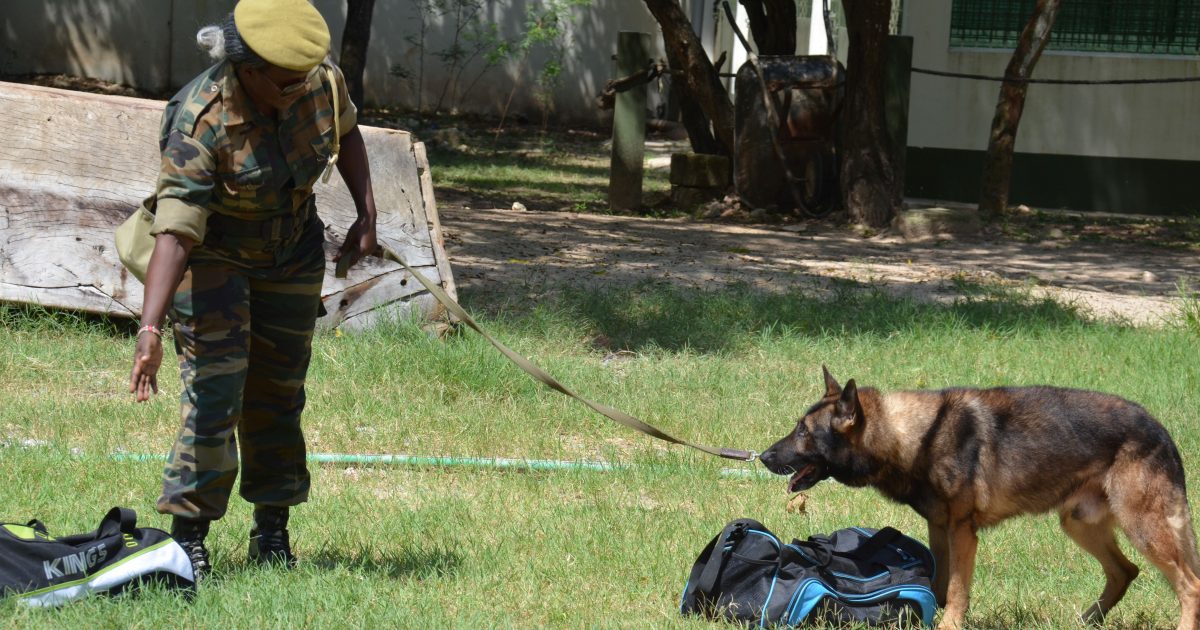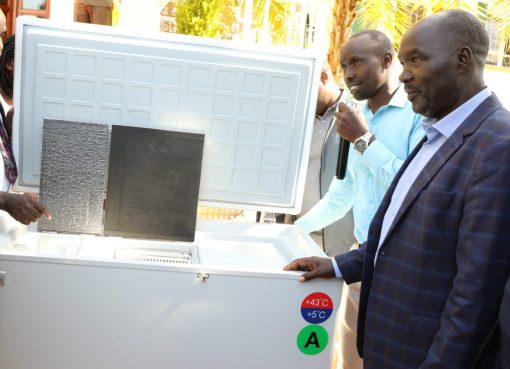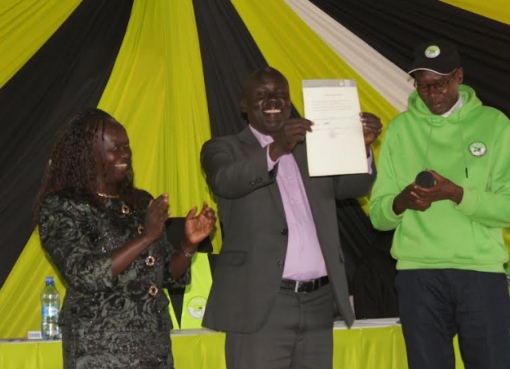Stealth, efficient and deadly. They are the animal equivalent of The Avengers and have become traffickers’ worst nightmare.
Within conservation circles, they are heroes whose legendary exploits in national parks, conservancies and ports are talked about in awed reverence. They have names-Dick, Daisy and Tony; identities that pay eternal homage to unflinching courage and life dedicated to protection of endangered species within Kenya’s boundaries.
Dr. Philip Muruthi, Vice President; Species, Conservation and Science for Africa Wildlife Foundation (AWF) says dogs are a critical factor in combating poaching and disrupting trafficking of wildlife products in East Africa and elsewhere in Africa.
“The canine unit is central in enhancing conservation operations. Dogs lack human flaws. They are efficient and incorruptible,” he notes.
In Kenya, trained dogs have become a key part of conservation activities. The Kenya Wildlife Service’s (KWS) K-9 unit was started in 2000 with the help of the British Army.
The unit, headquartered in Naivasha, started with only three dogs but has since evolved into a formidable entity and a central pillar in bolstering war against poachers and traffickers.
Mr. Mark Kinyua, a KWS canine expert and Head of Marine and Community Program, says the intervention of the canine unit in fighting illegal transnational trafficking of wildlife and wildlife products was a timely move that irreversibly disrupted this multi-billion-dollar business.
“The canines have been critical to our operations. With their assistance, we are eliminating cases of trafficking of illegal wildlife products through our air and sea ports,” notes Mr. Kinyua.
Canines used in conservation have unique abilities based on individual strengths. The units use specific canine breeds to match their functions.
KWS goes for the Belgian Malinois, German Shepherd, Springer Spaniel and Bloodhound. These breeds have exceptional learning abilities and excellent olfaction abilities that are further enhanced during the rigorous training.
Mr. Kinyua adds that canine breeds like Springer Spaniel, owing to their agility and small sizes, can easily ride on conveyor belts in airports and fit in confined spaces to inspect luggage.
“The breed is agile and moves rapidly through the bags in a conveyor belt to pick out if there is any hidden wildlife item,” he explains.
The K-9 unit has three main categories of dogs. The detection dogs, commonly known as sniffers, man sea and airports to check on passengers, luggage, bags and cargo. Sniffers also help locate hidden illegal wildlife products in buildings and residential areas.
Tracking is best done by the bloodhound. Their excellent noses are key in parks and other open areas where they pick up scents and trail them over vast distances often through dense bushes, rivers and forests.
During such operations, the tracker canines and the handler lead the way as heavily-armed teams provide ground and aerial support.
The assault dogs are the Kenya Defense Forces (KDF) of this unit. Owing to their fierceness, they are rarely deployed into community areas.
“They are trained to attack. We want to maintain rapport with the communities and this calls for keeping the assault canines away,” notes Dr. Muruthi.
Like special forces soldiers, the relentless training program the canines are subjected to, transforms them into formidable assets deployed to areas of operation with ruthless efficiency. Their superior ability to sniff out contraband items hidden in bizarre places makes them the prime guardians of all ports of entry.
Smugglers and traffickers of wildlife trophies often devise ingenious ways of concealing their illegal loot as they seek to take them out of the country. These methods range from hiding ivory in bags laced with pepper to hiding pangolin scales inside wooden statues, rocks or even customized steel sculptures.
However, such plans are nothing compared to a dog’s superior nose. In one memorable case that confirmed the essence of dogs in war against trafficking, a smuggler had once sneaked a product through a scanner only for a detector canine to pick up the scent at the luggage area.
“This tells you about the importance of canines in thwarting trafficking of wildlife,” he says.
In Kenya, K-9 units are distributed in strategic places for ease of intervention. Areas with canines include Meru National Park, Solio Ranch, L. Nakuru National Park, Tsavo West National Park. There are also sniffer dogs at Jomo Kenyatta International Airport, Moi International Airport, Mombasa Port and Kenya-Tanzania border.
Data from KWS on canine-assisted bust is impressive. Since 2014, the unit disrupted 102 wildlife trafficking incidents leading to the arrest of 114 suspects. In 2016 alone, 41 traffickers were arrested.
In the last five years, the incidences have plummeted. From 2020 to 2022, only four cases of trafficking were reported with a single case in 2022. This, experts say, is a solid testimony to the canine-led efficacy injected into wildlife anti-trafficking war.
“You cannot outwit the canines. Even when the smell is unfamiliar, they react. To a handler, the slightest change in behavior is a red flag,” explains Mr. Kinyua.
In countries where the canine program is up, data shows equally remarkable performance by the unit. AWF data shows the dogs were involved in 449 incidents since 2016. These include 248 in Uganda, 114 in Kenya, 81 in Tanzania, two in Mozambique and four in Botswana.
Over that same period, the dogs have searched 12,794 flights, Shs.5.7 million cargo and Shs.52 million pieces of luggage.
In Kenya, the unit has seen the recovery of two tons of raw and worked ivory mostly bangles, necklaces, chopsticks, pendants and carvings. There has also been recovery of rhino horn, lions’ teeth and pangolin scales.
Dr. Muruthi says dog-users must commit to uphold the five fundamental freedoms of the dogs. They include freedom from hunger and thirst; from discomfort and from pain, injury or disease. Others are freedom from fear and distress and the freedom to express normal behavior.
The achievement aside, the canines are expensive. The training, maintenance and meals can soar to hundreds of thousands. When being moved, the dogs ride in absolute comfort like royalty in special air-conditioned cages to give them an optimum environment to deliver their best results.
“The cost of this investment is nothing compared to the gargantuan work and results these canines deliver. They have saved billions in what they do, he says.
One significant breakthrough for canines is on inspecting containers at Mombasa port through Remote Air Sampling for Canine Olfaction (RASCO) technology.
First used in 2018, RASCO entails blowing air through sealed containers and putting it into filters. A sniffer dog is offered the filters to pick the scent. This technology has helped handle the massive volumes of containers at the port with ease.
“The canines have made it easy to inspect the thousands of containers cleared daily,” says the official.
By Wagema Mwangi





